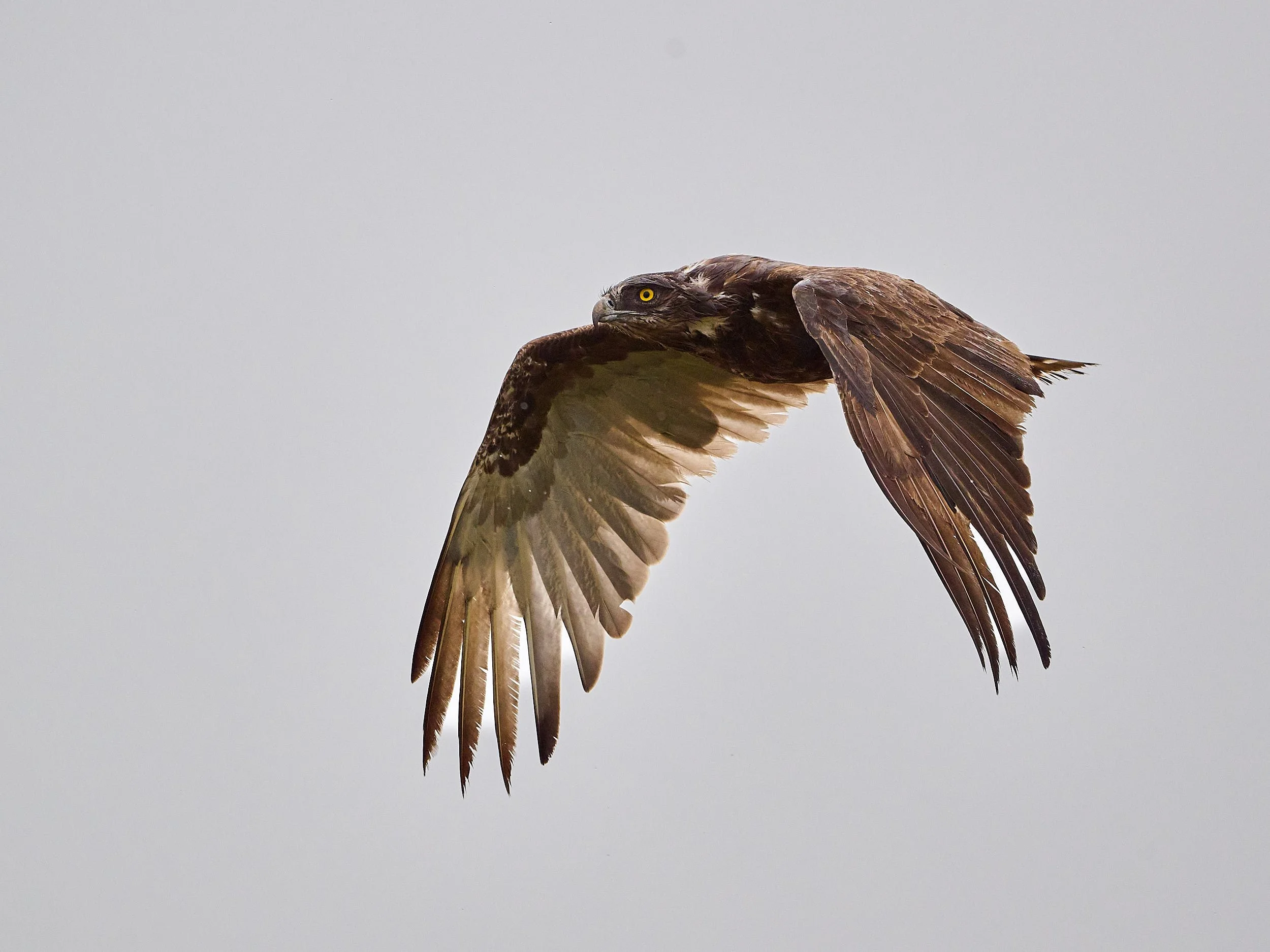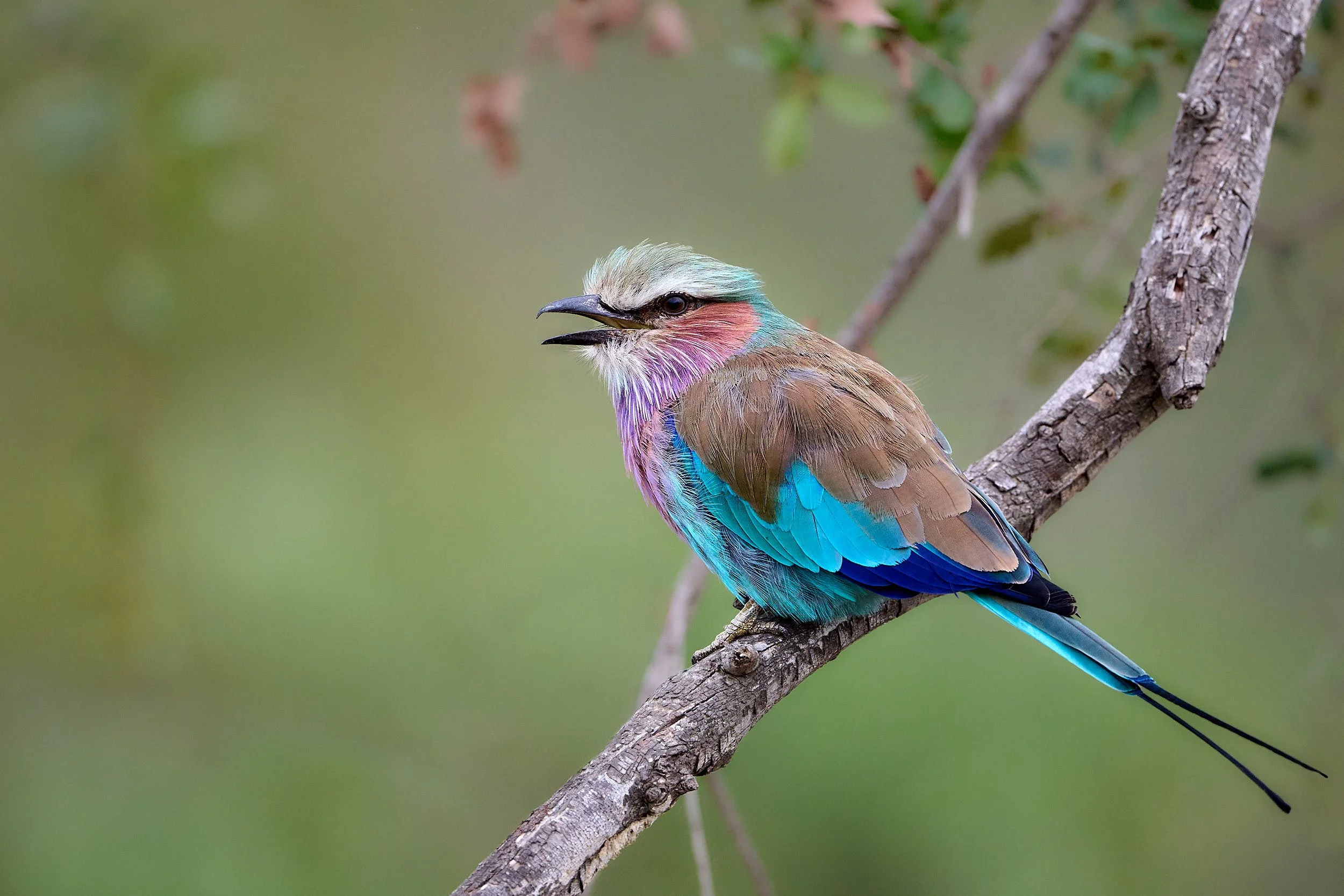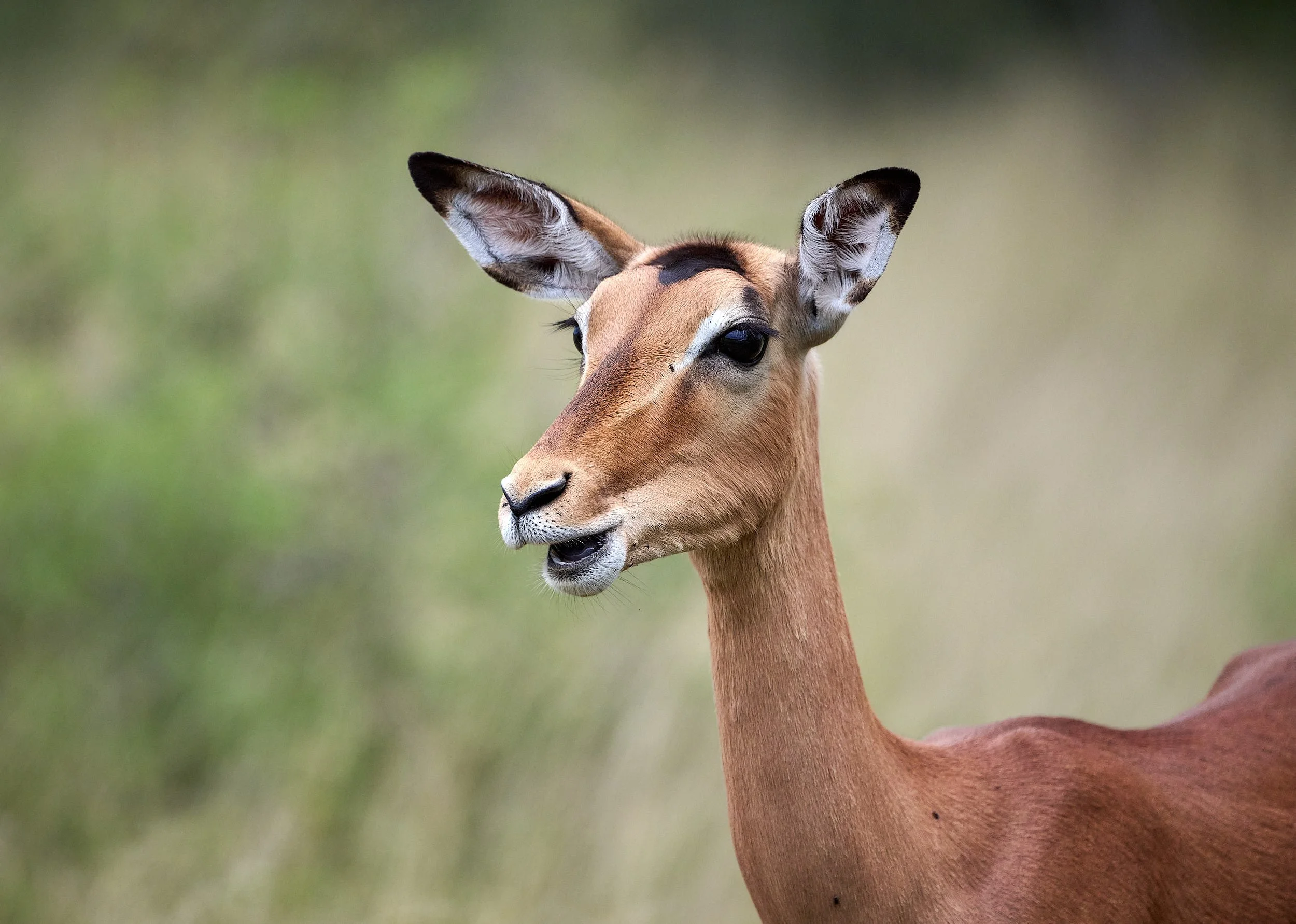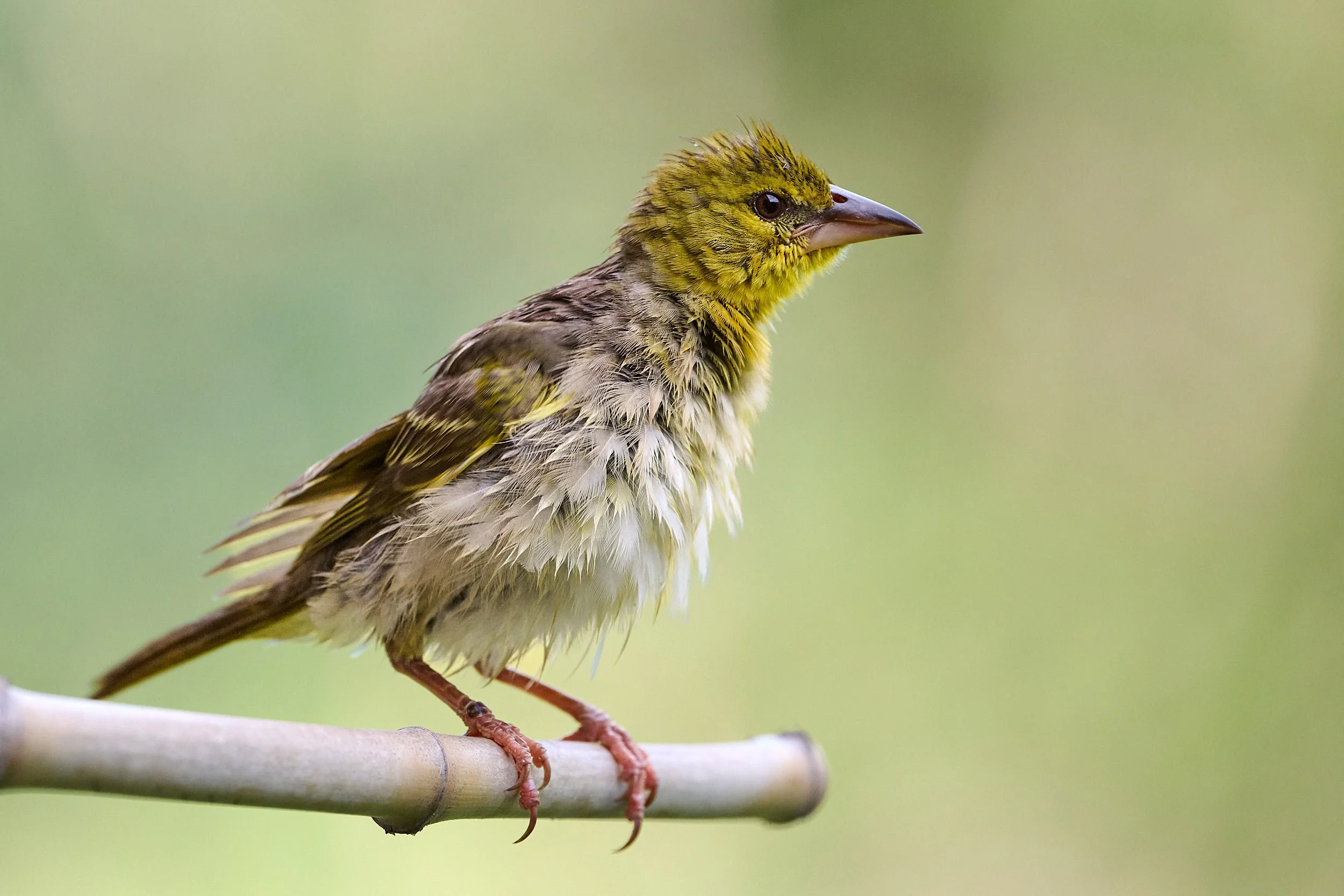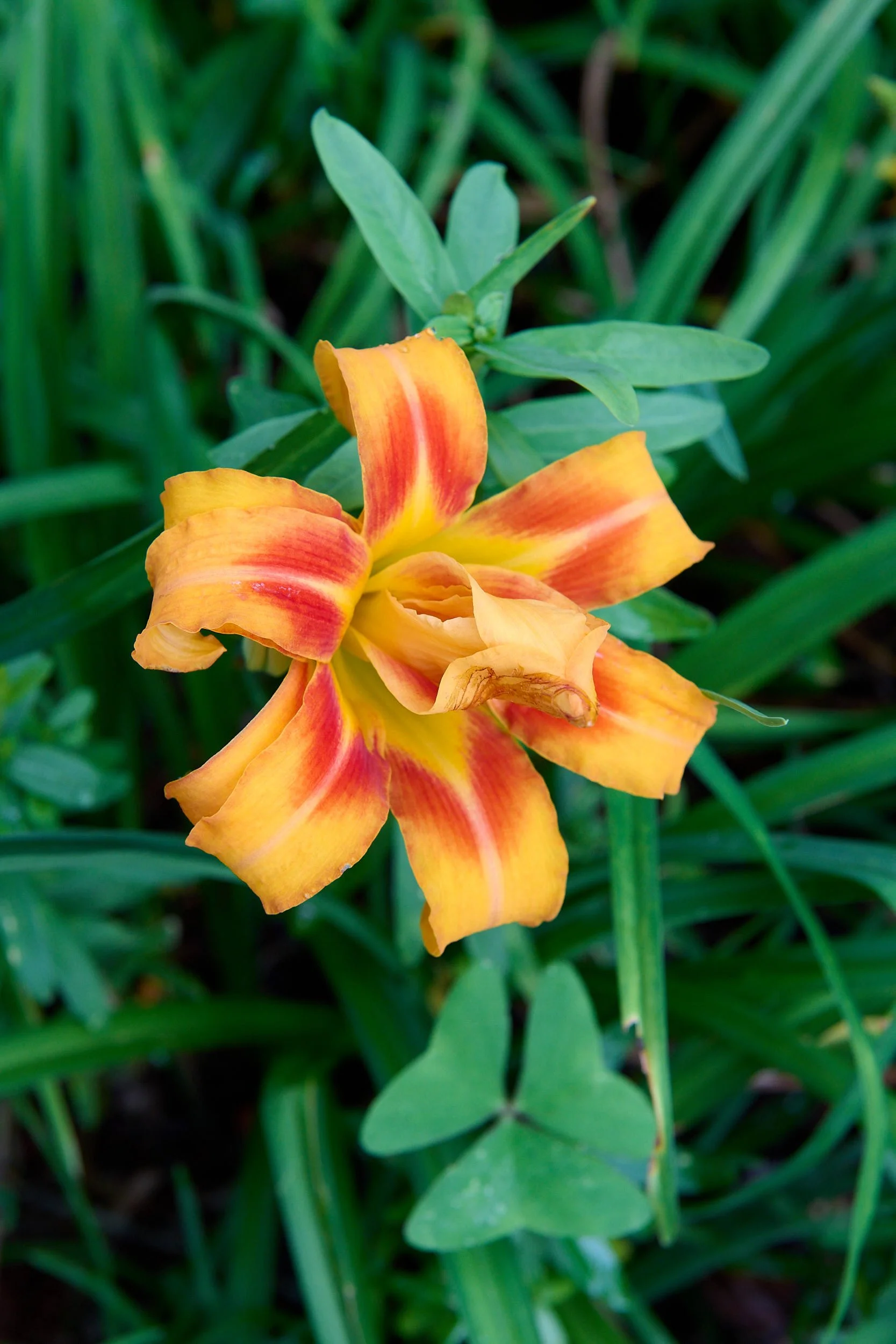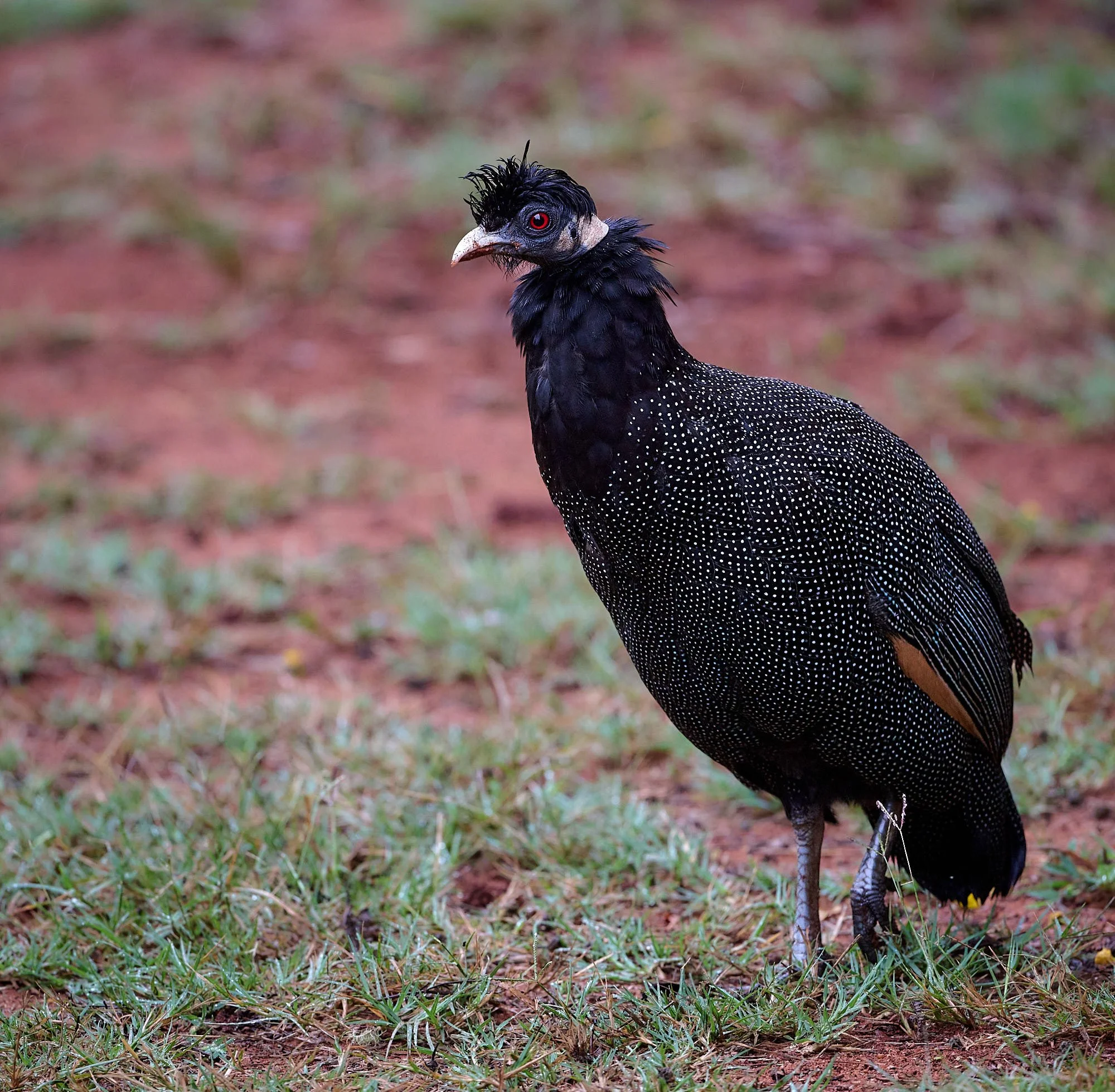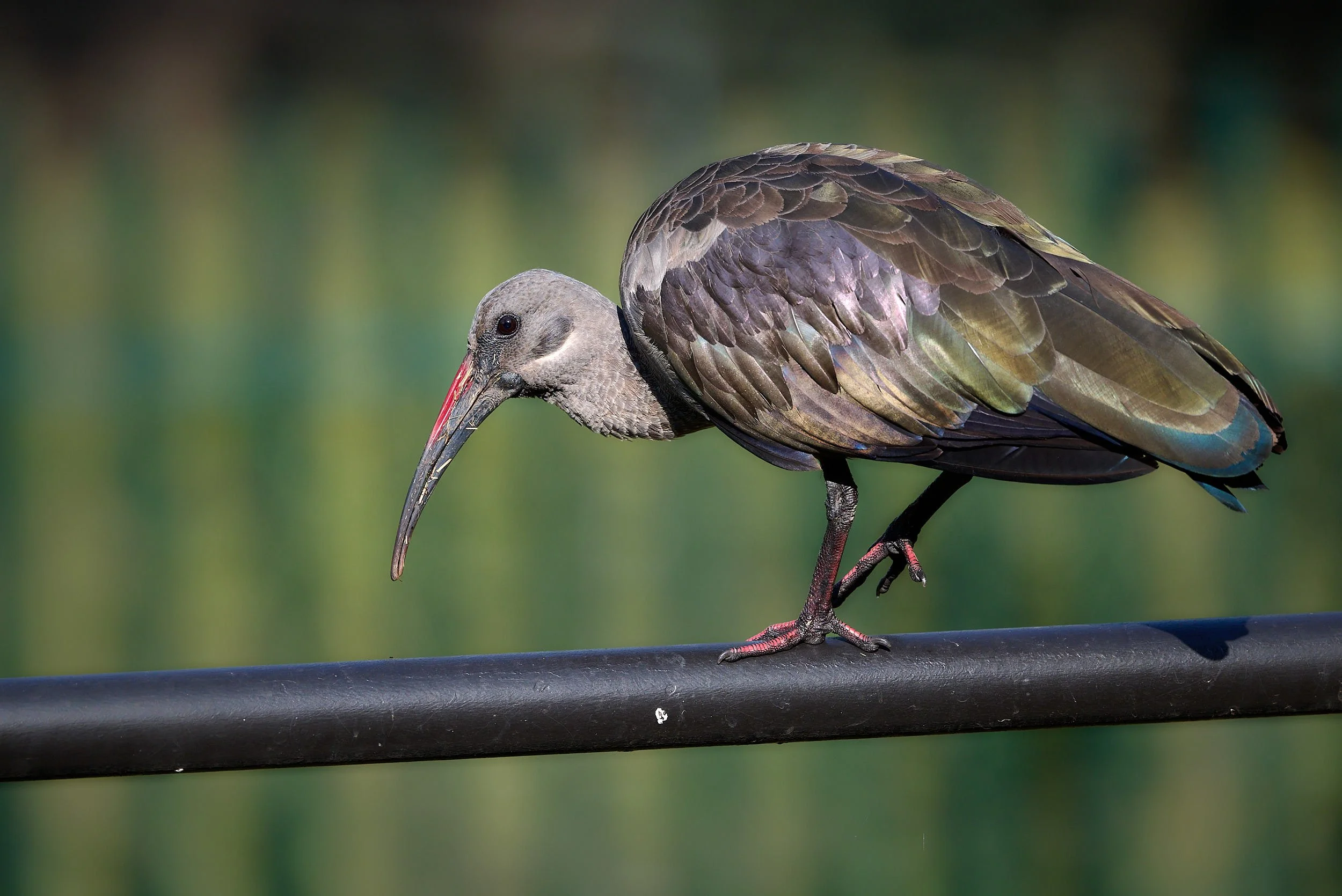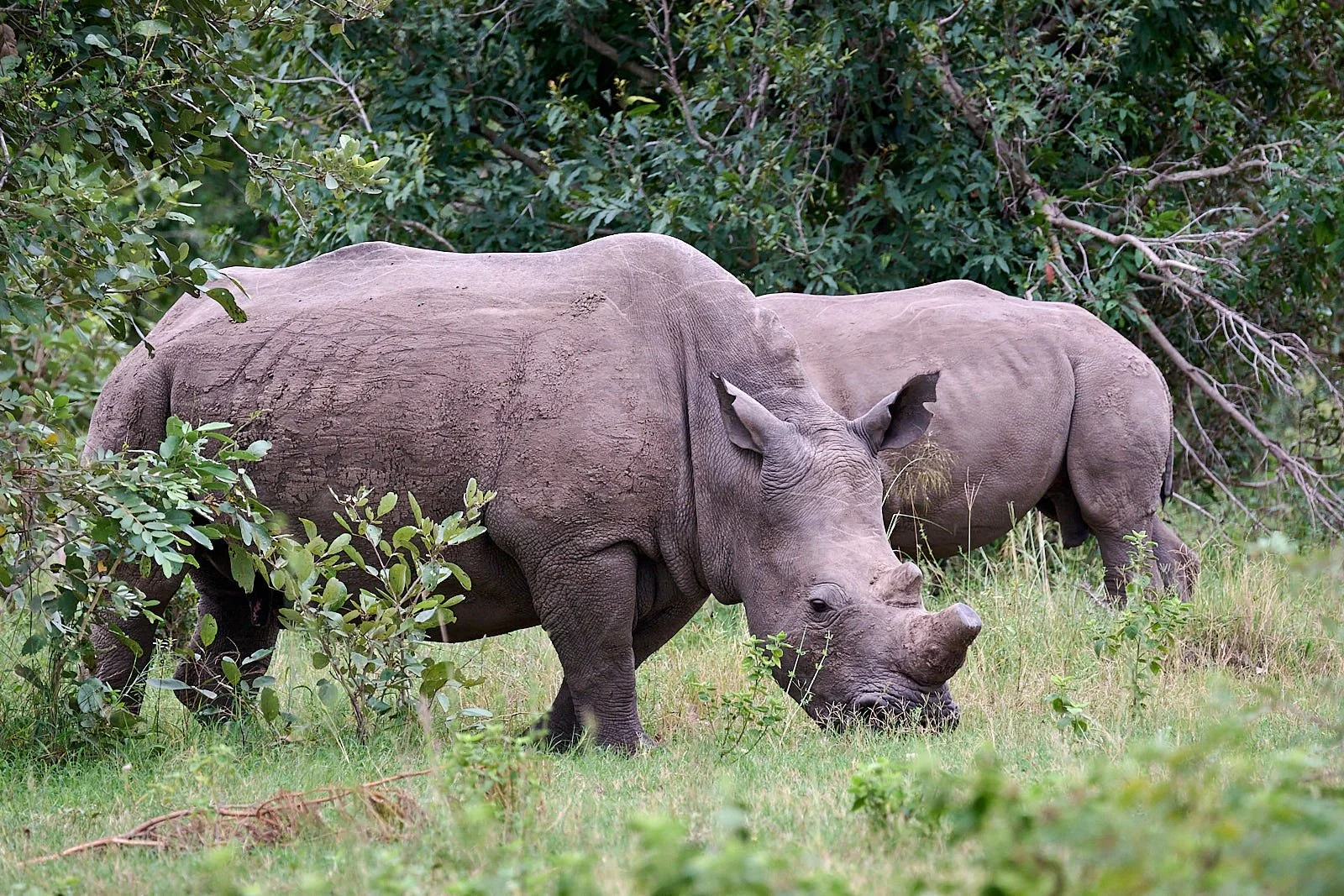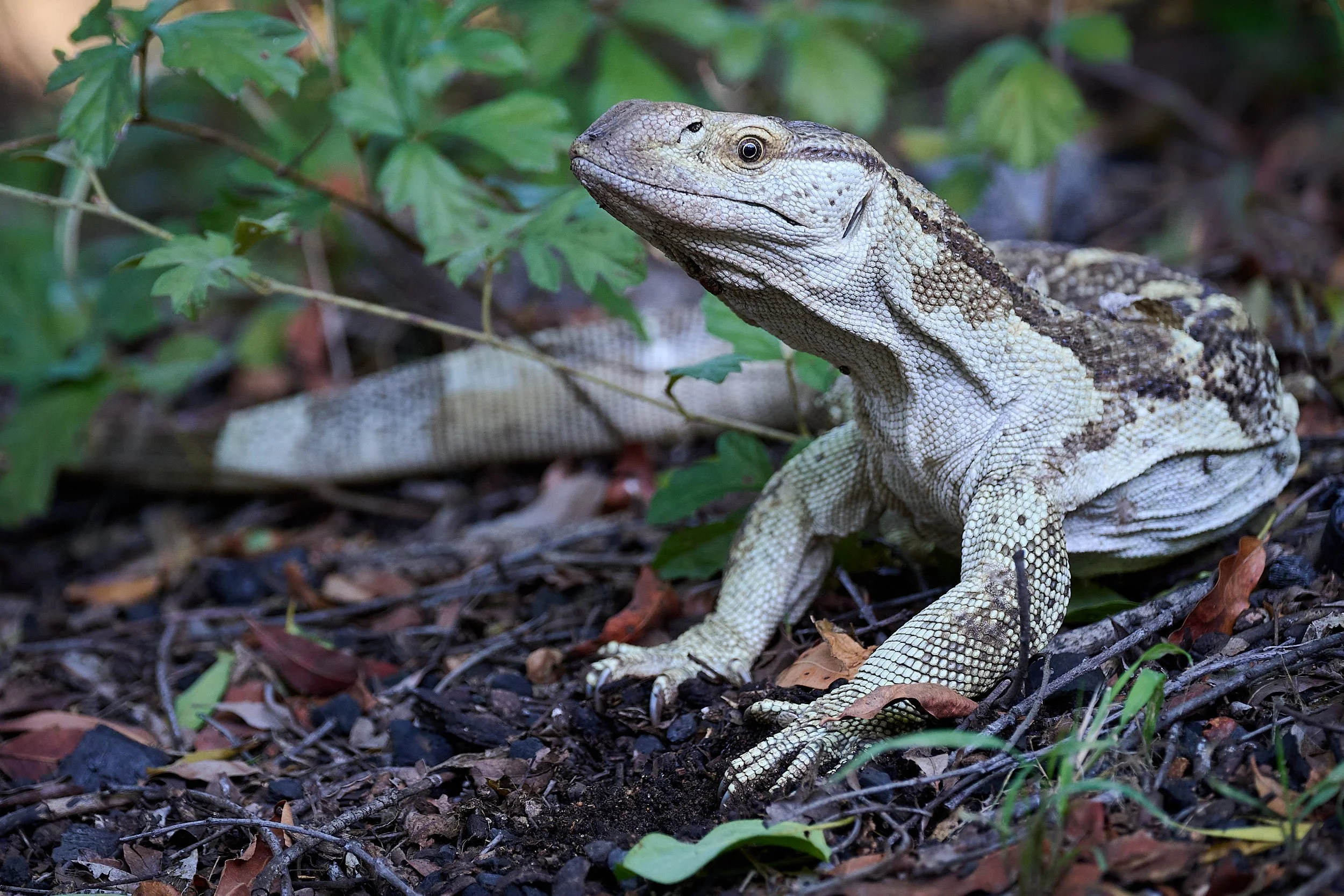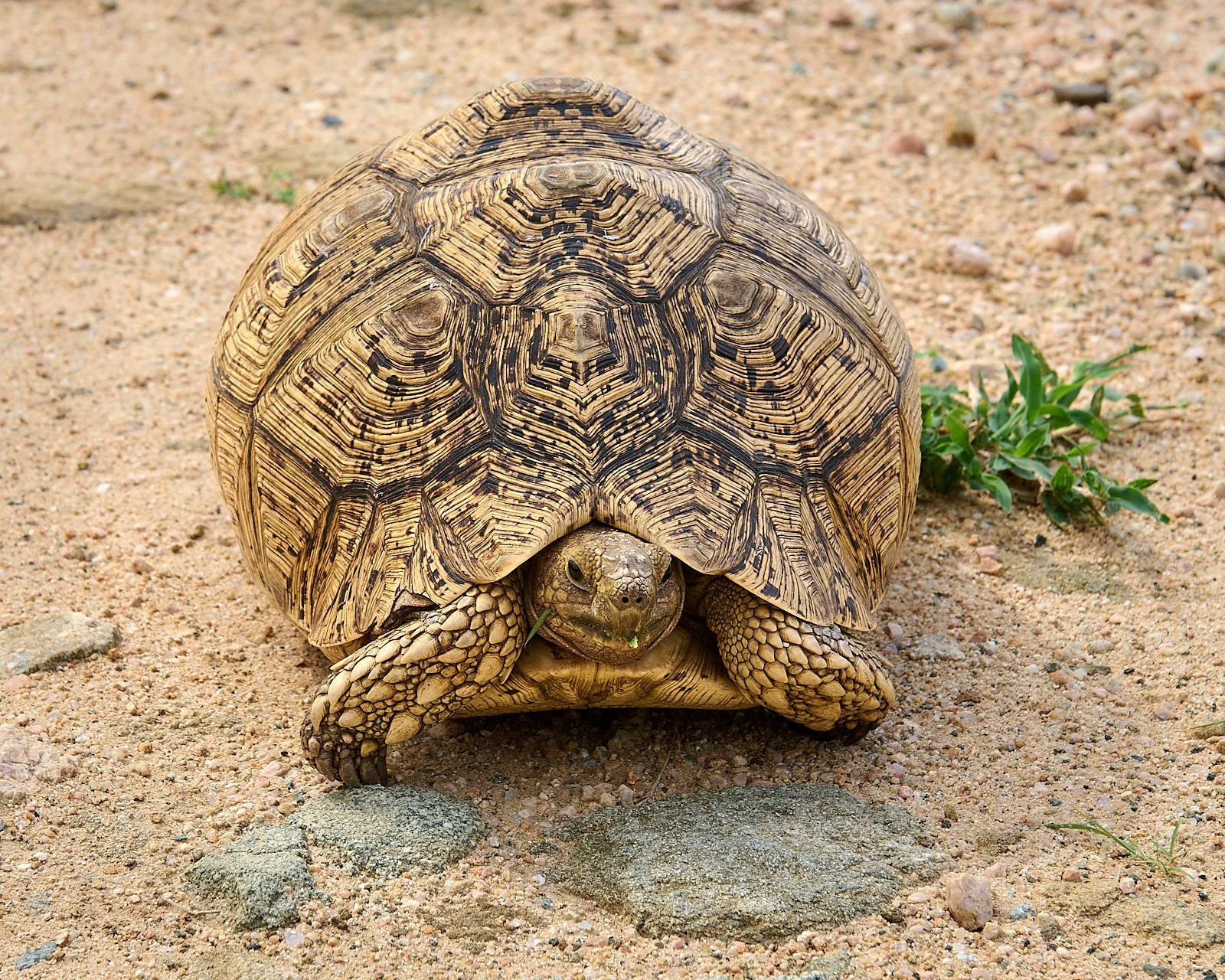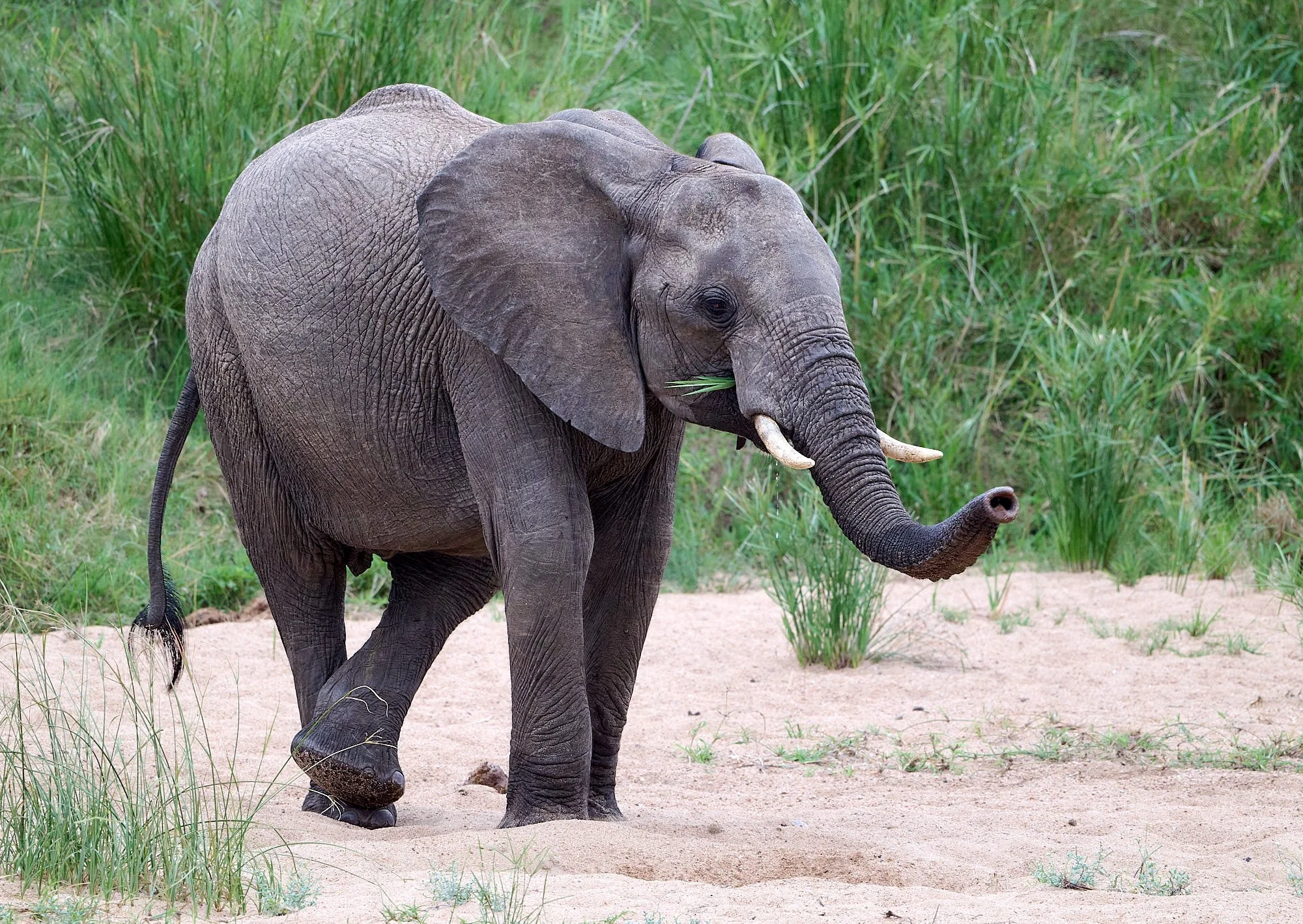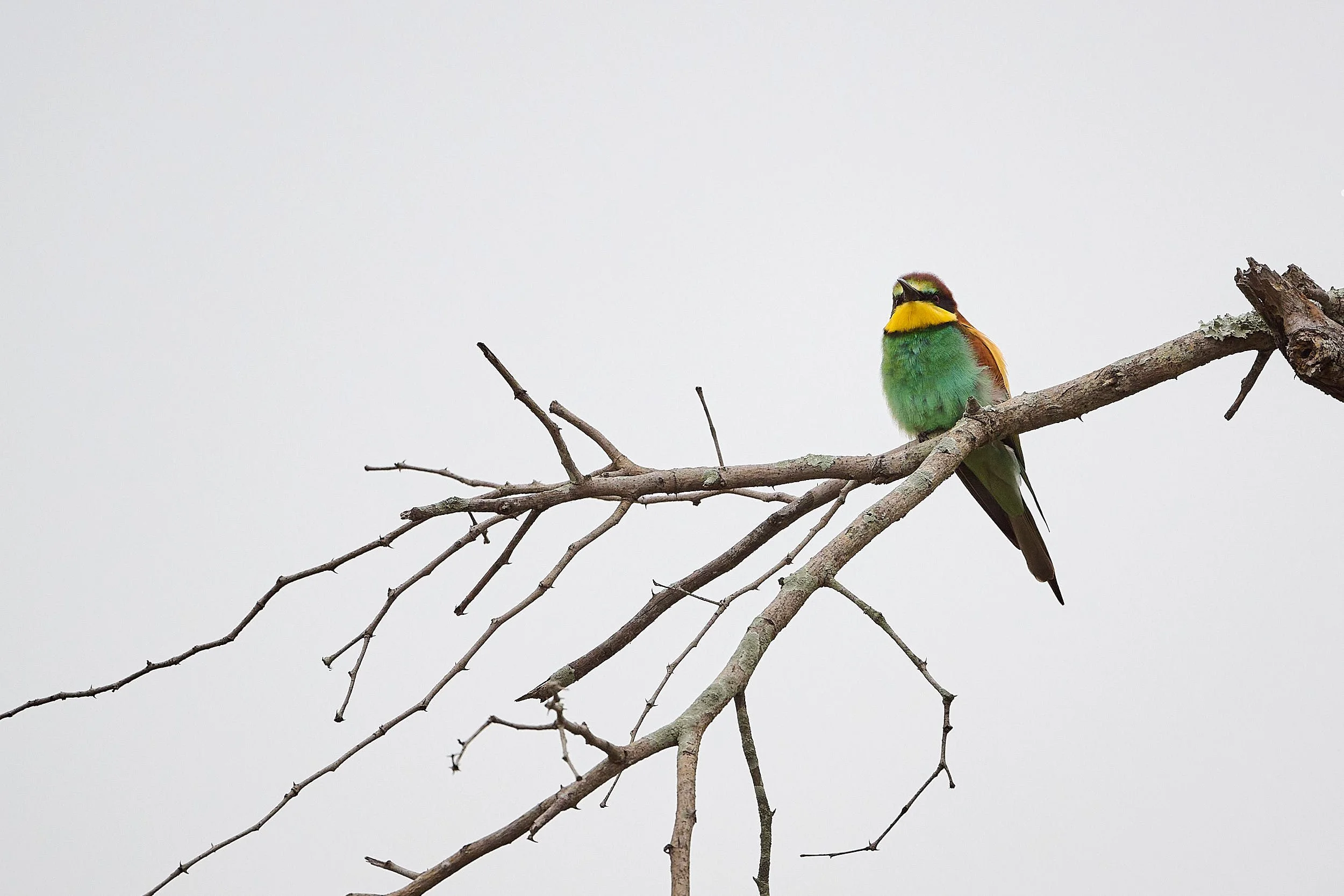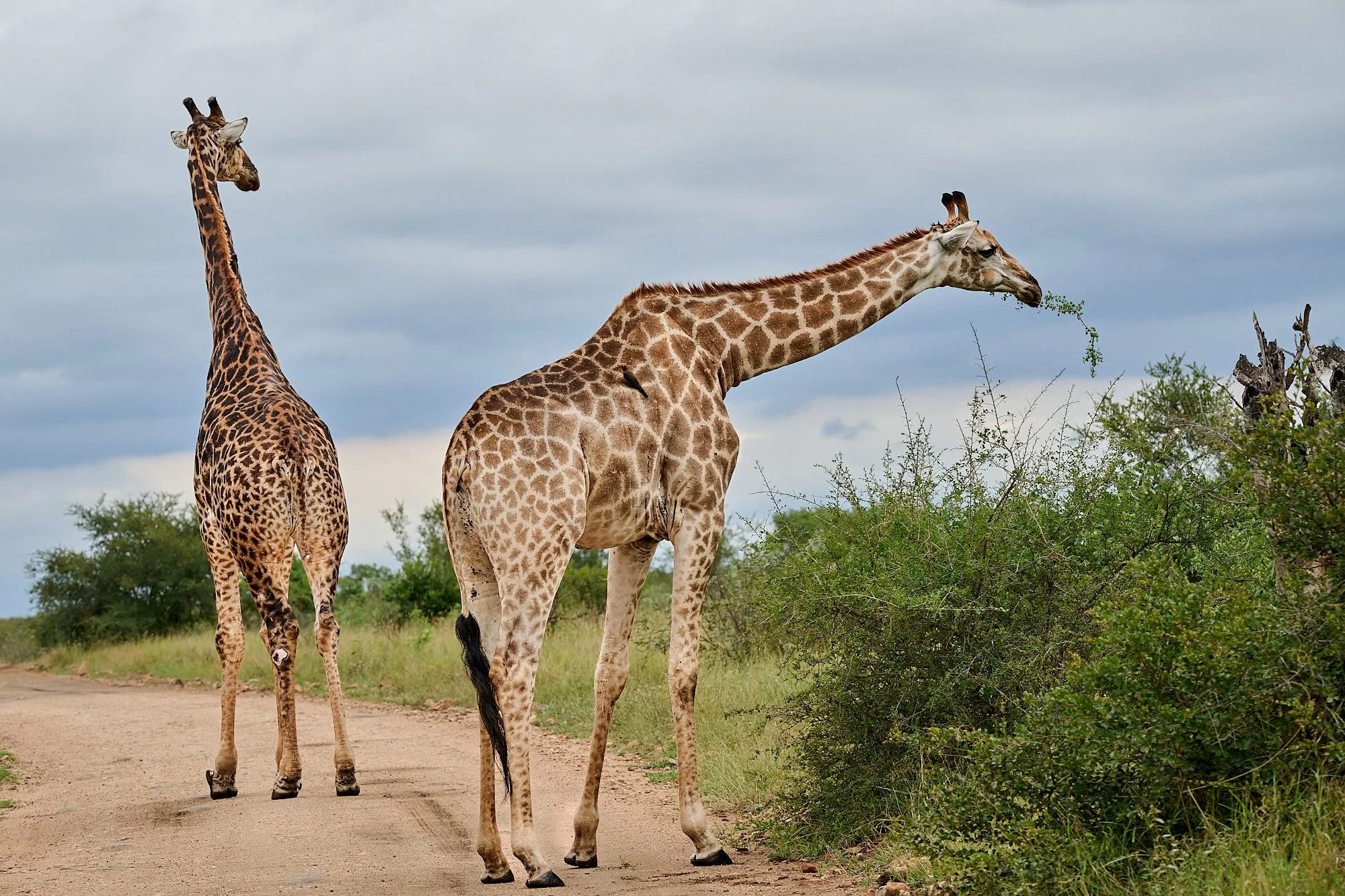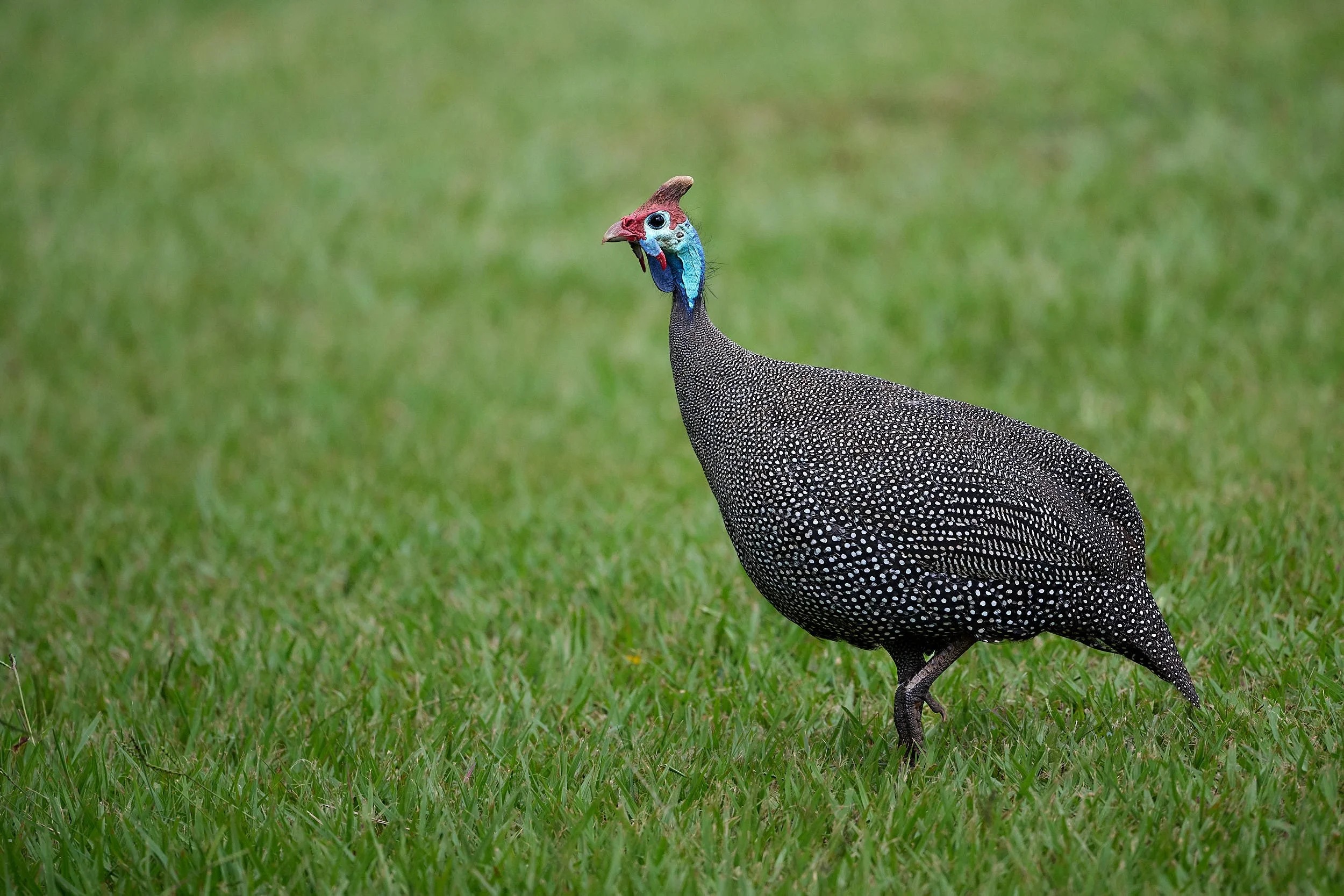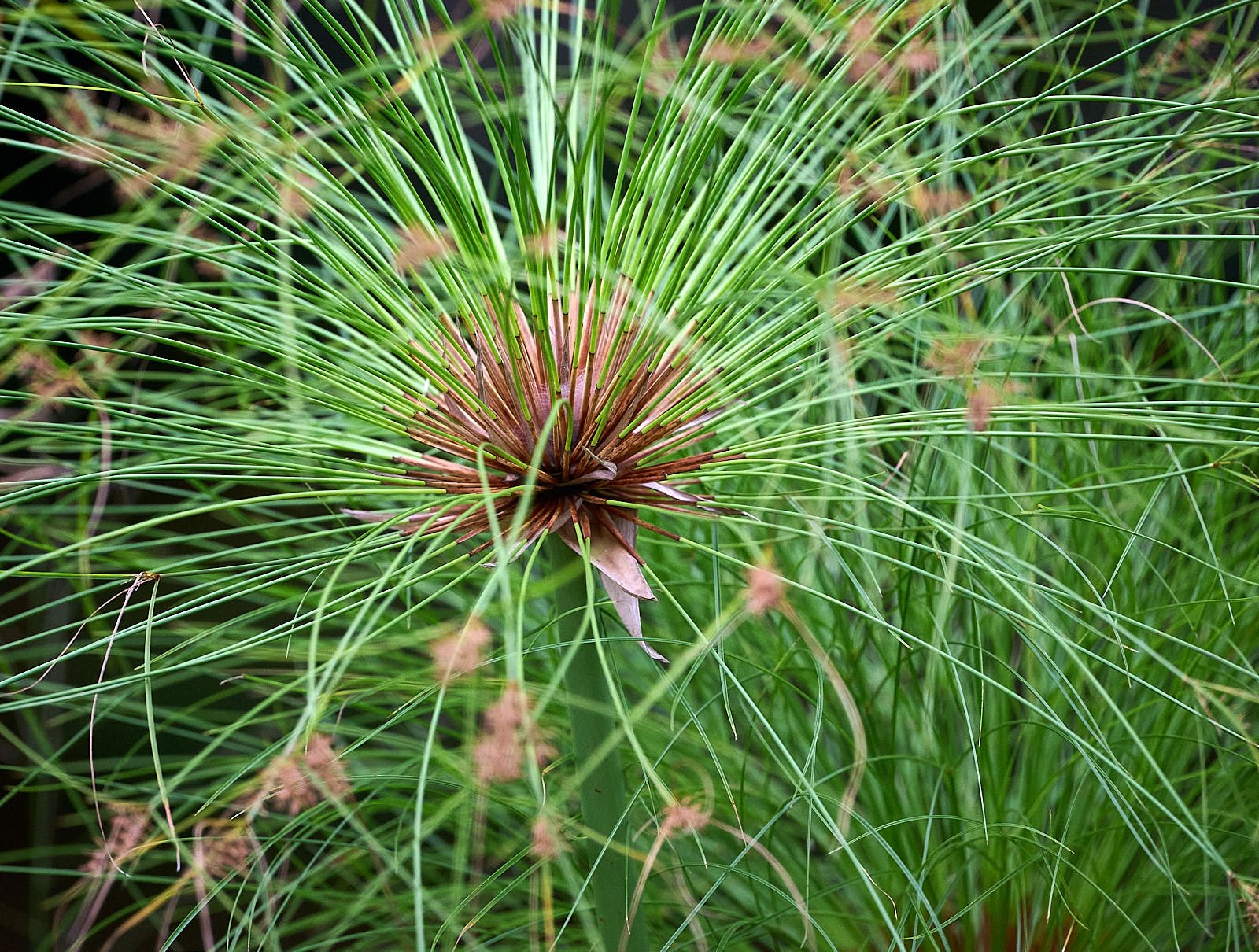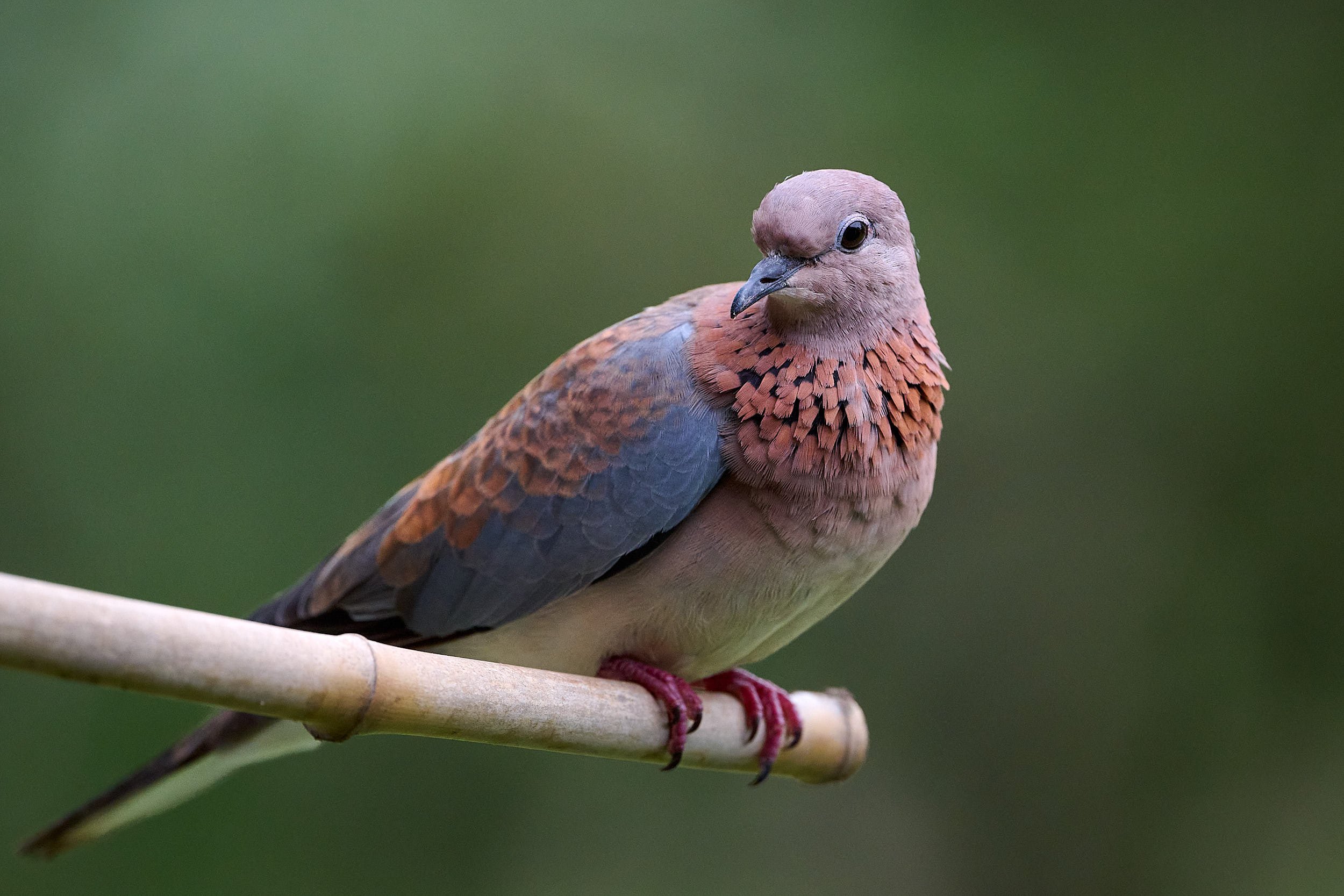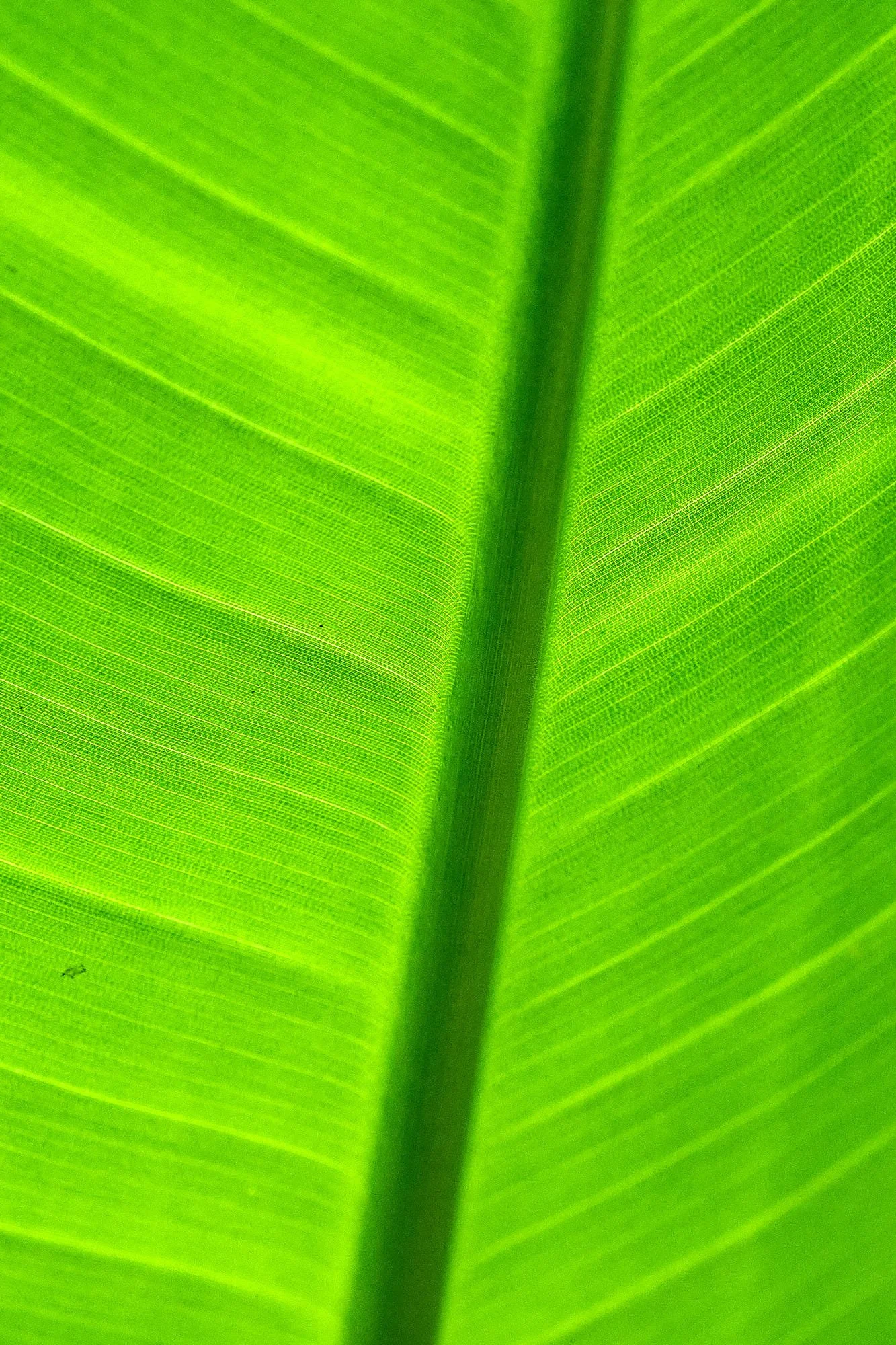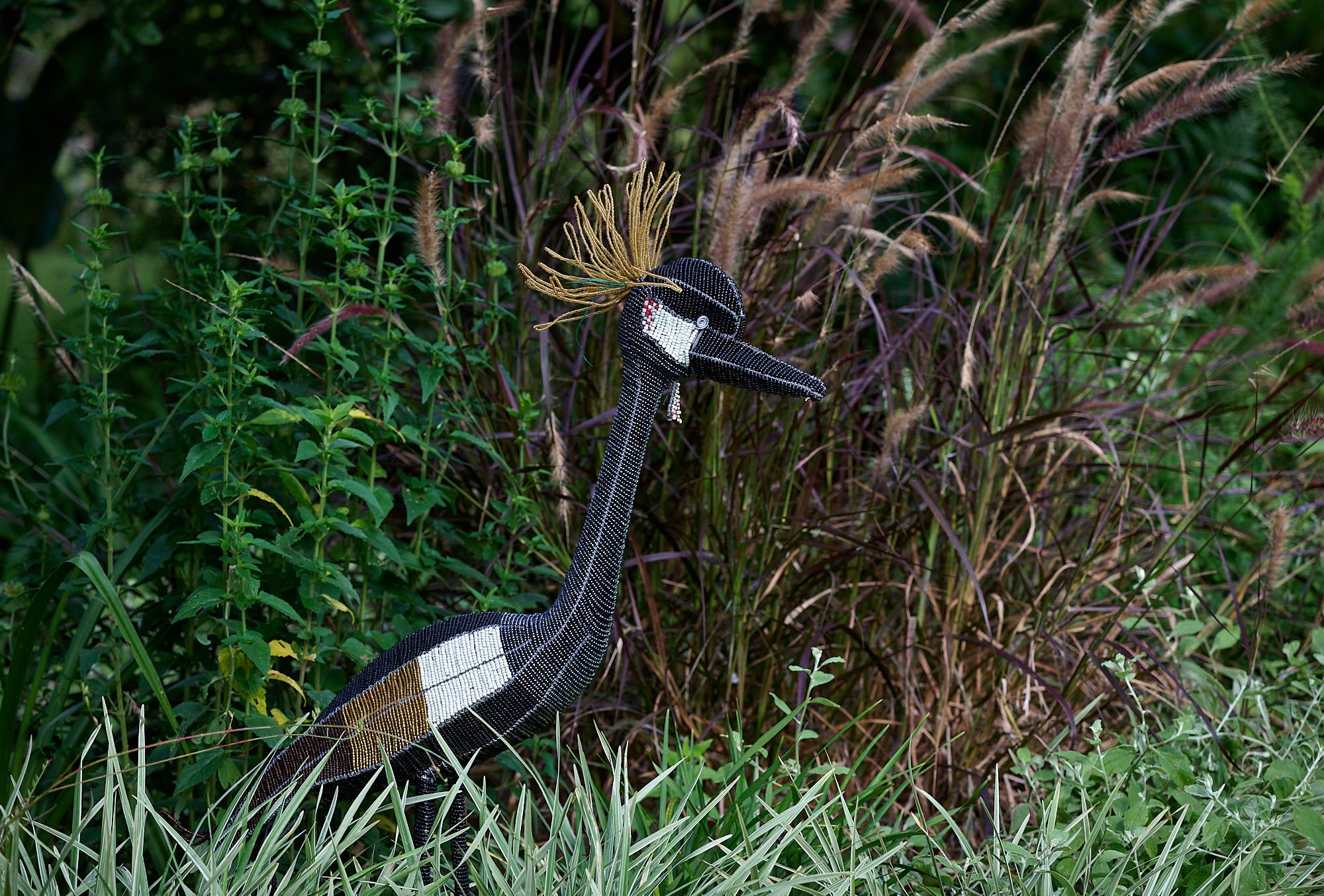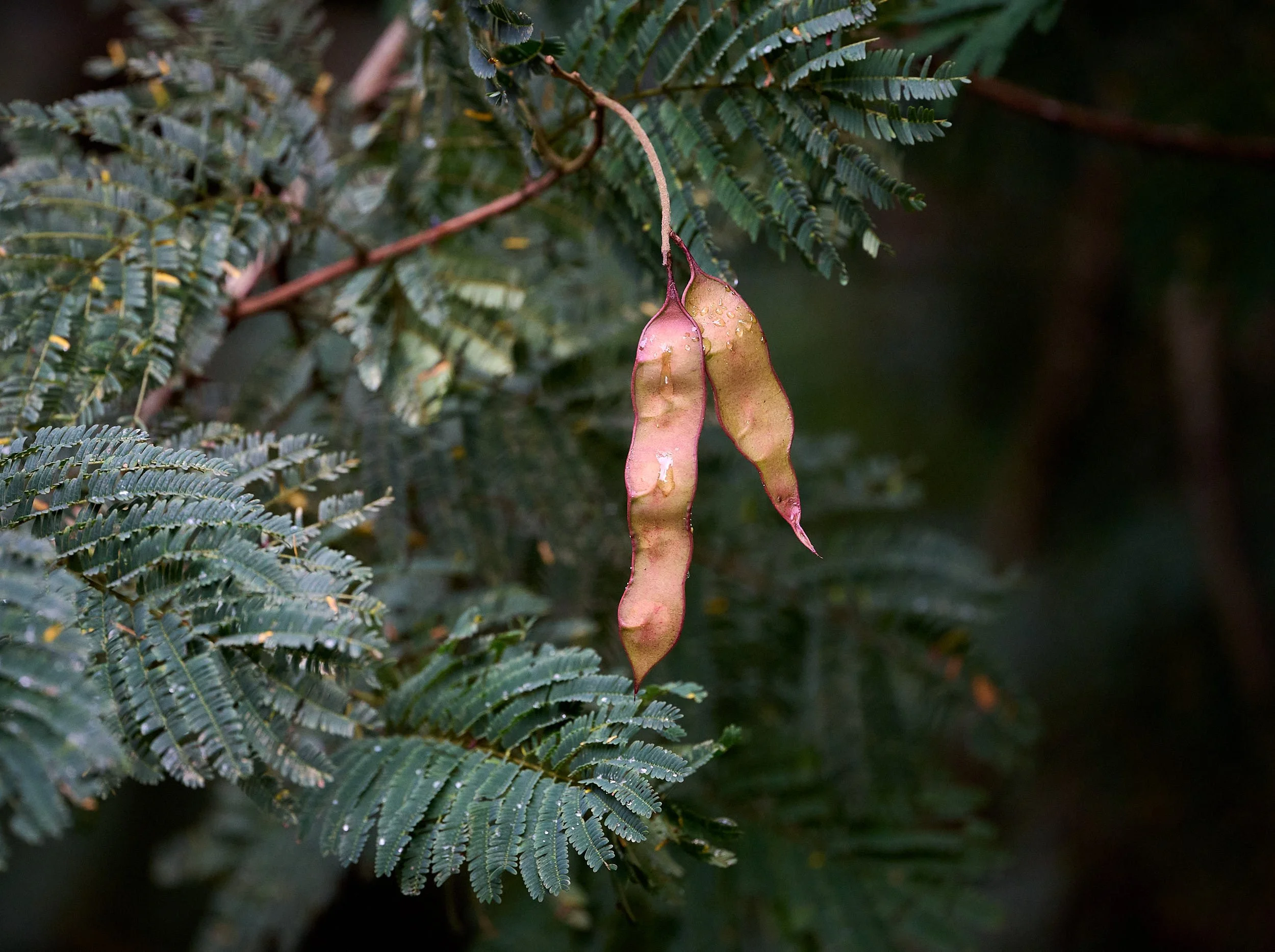Into Africa: February - April 2024 (part 3)
Brown Snake Eagle
Burchell’s Coucal
Southern Red-belled Hornbill
Common warthog and Red-billed Oxpecker
Burchell’s Starling
Rock monitor lizard
Vervet monkey
Impala lily (Adenium multiflorum)
Leopard tortoise
Cape giraffe
Lilac-breasted Roller
Impala female
Woodland Kingfisher
White-backed Vulture
Swainson’s Spurfowl
Leopard
Flap-necked chameleon
Tawny Eagle
Red-billed Oxpecker
Southern Carmine Bee-eater
Steenbok
Helmeted Guineafowl with chicks
Bontebok
Laughing Dove
Village Weaver: bad hair day
Day lily (horticultural variety)
Red duiker
White-fronted Bee-eater
Arrow-marked Babbler
Southern Crested Guineafowl
Yes!
Section #3: The Lowveld, South Africa
After KwaZulu-Natal, we travelled to Johannesburg and linked up with our generous and loving family. J & J have a splendid house and peaceful garden. The irrigated lawn attracts Hadeda Ibis that probe deep into the grass for invertebrates such as insects and earthworms.
Where next? South Africa’s Lowveld
Leaving Johannesburg, we then spent about 2 weeks exploring the lowveld with friends.
We visited Biyamiti Bush Camp in Kruger National Park, White River – a town on the edge of the lowveld, and Zvakanaka Farm on the east-facing foothills of the Soutspansberg range. Zimbabwean buddies drove south across the border to join us at Zvakanaka. We had a fantastic time during all these activities. It was great to renew and strengthen old friendships.
Places we visited within or adjacent to the lowveld.
Geography
Central South Africa is a plateau, some 4,000-6,000 feet above sea level, that is delineated at its eastern edge by the tall Drakensberg range. If you venture beyond the mountains, in the north-eastern part of the country, the terrain abruptly descends to the lowveld. The lowveld ranges from 500-2,500 feet in altitude and it lies between Drakensberg’s cliffs and Mozambique’s humid coastal plains. The landscape is transected by east-flowing rivers that are fed by highland rainfall.
Southern Africa relief map, showing the lower altitude regions in green.
Lowveld climate
The lowveld’s climate is subtropical and is influenced by the region’s proximity to the Indian Ocean. Summer’s hot rainy season usually starts in October and ends around March, transforming the arid park into a lush, flowering paradise. The dry season continues through winter and is characterized by warm, dry days and chilly nights.
Lowveld geology
Lowveld bedrock consists of ancient granite and is overlain by shale and sandstone layers. Volcanic activity at the time when Gondwanaland was fracturing resulted in basalt lava flooding over the plains. Sandstone is found in the lowveld’s northern regions, apparently derived from 100 million-year-old Kalahari sands. As is to be expected, lowveld vegetation is greatly influenced by soil type and topography.
(Adenium swazicum flowers)
Kruger National Park
Kruger National Park was established as a game reserve in 1898 to protect the wildlife of the South African lowveld and was named after Paul Kruger in 1926. The Park covers about 7,500 square miles and supports an impressive number of species: 336 trees, 49 fish, 34 amphibians, 114 reptiles, 507 birds and 147 mammals. It is a major tourist attraction, many hoping to see the “Big Five”. The odds are reasonably good; it is estimated there are 1,500 lion, 17,000 elephant, 48,000 buffalo and 1,000 leopards. Rhinoceros are gravely threatened because of poaching for horn and estimates of their population are not provided by Parks.
We had a “Big 5” day but only realized it during evening stories at camp. The term comes from an early era of trophy hunting. Get real - there is much more to any Park than five species.
African elephant bull
Leopard male
Southern white rhinos - dehorned in the past as an anti-poaching measure.
Camp experiences
Biyamiti Bushcamp is situated in riverine woodland and has, on its perimeter, an electrified fence to keep the guests safe from big wild animals. However, smaller creatures enter the camp area at will and were a delight to observe.
Natal Spurfowl
Vervet monkey eyeing marula tree fruit
A rock monitor lizard patrolled the woodland undergrowth, looking for edibles.
Somehow, it detected a millipede burrowed below the surface litter & dug it up.
Gone in one gulp.
Bennett’s Woodpecker
Leopard tortoise enjoying the fresh vegetation; it eats wide variety of plants. Seeds can pass undigested through the gut, so the tortoise plays a significant role in seed dispersal. Leopard tortoises sometimes gnaw on bones, ash and hyena feces to obtain calcium, necessary for bone development and their eggshells.
The species is widely distributed across the arid and savanna regions of southern Africa and can be found at altitudes ranging from sea level to 9,500 ft.
Giant legless skink.
This lizard fooled me, I thought it was a snake. Sent the picture to my brother, who identified it.
Impala lily (Adenium swazicum)
Stapelia gigantea. One of its common name is Carrion Flower - the flowers smell of rotten flesh and attract flies (pollinators).
This Woodland Kingfisher was a regular feature at the wire fence. It would use its perch to hawk for insects.
The bird dove below into a grass patch and captured a prize.
Down the hatch it goes!
The Biyamiti river flows past camp. It is a small tributary and, during our visit, was reduced to a series of pools. This youngish male wandered down to drink at an elephant-excavated water hole. It was soon after sun down and the soft light was perfect.
Driving around
Our good friends W & M took us game viewing and birding in their vehicle. It was an excellent mobile blind and W is the best driver!
It was raining quite hard when we arrived. This Southern Yellow-billed Hornbill looked a little damp but opted to not seek cover.
Natal Spurfowl: drenched.
Bateleur male, soon after the rain.
The bird is a diurnal scavenger and hunter. Numbers have declined substantially in recent times due to poisoning (eating poisoned carcasses set out for jackals and other carnivores) and the species’ range is now mostly restricted to protected areas.
Brown-hooded Kingfisher
Hungry Burchell’s Coucal youngster.
Dutiful parent in attendance.
Black-bellied Starlings
Brown Snake Eagle
The White-fronted Bee-eater’s diet is exclusively flying insects. Most are caught in the air within 20-50 feet of the bird’s perch. About 75% of the prey are honeybees. The tail end of a stinging bee is rubbed against the bird’s perch until the sting and venom are discharged. The insect is then tossed into the mouth and swallowed. Indigestible parts are regurgitated as pellets.
Red-backed Shrike, male
Red-backed Shrike, female.
The species is a common non-breeding Palearctic migrant to Africa. It breeds in most of Europe and Western Asia. The birds arrive in South Africa in late November and departs in April. They prefer semi-arid open woodland and are solitary and territorial. Their diet consists of insects when at non-breeding grounds but will eat birds during migration.
Three-banded Plover working the edge of a water hole.
Lilac-breasted Roller
The species is endemic to Africa and a common resident in dry savanna and open woodland. It is mostly insectiverous, but will also consume small snakes, frogs, birds and rodents. Birds use a sit-and-wait hunting technique, pouncing on prey on ground or will hawk insects in flight. They are attracted to grass fires for the food opportunities. Vocalizations are described as harsh and unmusical. But hey, if you look that good, who needs to sing?
Brown-headed Parrot nibbling on Combretum seeds.
Grey Go-away-bird
Blacksmith Lapwing. This common resident frequents the shorelines of inland water systems, short grasslands, and mudflats. The common name refers to its call - klink klink klink, like a hammer on an anvil. Who uses anvils these days?
Vervet monkey crossing a dry river bed.
Vervet monkeys are the common monkey of the African savanna and are also known as grivet or green monkey. They are one of the few African primates to escape the rain forest and come down from the trees. However, being far smaller than baboons and lacking the fleetness of the patas monkey, the vervet cannot afford to venture far from the safety of trees and is also more dependent on trees for food. It is essentially an edge species, typically associated with riverine vegetation.
A vervet troop is a hierarchy of families whose members sleep, forage and rest together. Males emigrate as they near maturity (about 5 years of age), whereas females stay home and take their places in a female-bonded society wherein the mother’s rank predetermines the daughter’s. Beginning in infancy, vervet females are accorded a social position just below their mother’s even by adult monkeys. Since high-ranking females gain priority to food, water and othe amenities, they and their offspring are likeliest to survive in times of famine. (From: Estes: Behavior Guide to African Mammals).
European Bee-eater
Carmine Bee-eater.
This individual was reacting with raised feathers and threatening pose to another Carmine that had landed nearby.
With mom in attendance, a warthog piglet follows its older sibling’s example and relishes a mud bath. Warthogs wallow daily during hot weather.
Spotted Flycatcher
Africa is way ahead of America when it comes to constructing permanent wildlife blinds. We spent a few hours at a one blind (“hide” in African terminology). No mammals arrived but this African Pied Wagtail kept us entertained.
Red-billed Oxpecker.
Common hosts include giraffe, greater kudu, eland, sable, white rhinoceros, black rhinoceros, Burchell’s zebra, buffalo, and impala. Although it may consume host blood and mucus, the Red-billed Oxpecker mostly eats ticks. In one study, captive birds ate about 1,200 tick larvae or 100 engorged adult ticks per day.
Crested Barbet
Who says I’ve got a big mouth?
Immature dwarf mongoose.
These gregarious animals prefer savanna with numerous termite mounds for refuge. A pack’s co-dominant pair produce all the offspring and members of the pack help care for and feed the young.
Steenbok
Ruminants such as the steenbok lie down by first kneeling on their forelegs, then lowering the rear end. To enable the stomach compartments to move freely, ruminants have to lie on the brisket (lower chest). They rarely lie on their sides. If anesthetized ruminants are left lying on their sides, they are likely to ingest rumen contents and suffocate. Ruminants doze but do not sleep soundly like non-ruminants. Possibly the need to maintain a certain position and to keep chewing the cud precludes normal sleep. Yet rumination goes together with a relaxed state - the brain waves of ruminating animals resemble those associated with sleep in non-ruminants. (From Estes)
White-backed Vulture.
The characteristic bushveld vulture, it is a scavenger at carcasses; feeding mostly on muscular tissue and viscera (skin and bones are generally ignored).
The population has undergone a very rapid decline and is critically endangered. Main causes include habitat loss and conversion to agro-pastoral systems, big reductions in wild-ungulate populations (resulting in reduced availability of carrion), hunting for trade, persecution, poisoning, and collisions with powerlines. Evidence from wing-tagging and telemetry studies suggests that annual mortality, principally from incidental poisoning (especially from highly toxic pesticide carbofuran), is as high as 25%. Moreover, the non-steroidal anti-inflammatory drug diclofenac, often used for livestock, is fatal for Gyps vultures when ingested at carcasses. Ivory and rhino poachers poison their victims‘ carcasses to diminish vulture aggregations and prevent timely detection by anti-poaching units.
In Southern Africa, vultures are captured and consumed for perceived medicinal and psychological benefits. Vulture parts are regarded by some to have special properties and were used, for gambling purposes, to predict results in the Soccer World Cup hosted by South Africa. It has been predicted that the Kwa-Zulu White-backed Vulture population could become locally extinct by about 2030–2035.
Crowned Lapwing
Green-backed Pytilia
The leopard is a solitary and territorial animal. Adults associate only in the mating season. Cubs remain with their mother for up to 2 years and may receive food from their mother if their hunts are unsuccessful.
Leopard is an ambush and stalk predator, mainly hunting from dusk until dawn. It seeks to pounce before its quarry can react, stealing as close as 5 yards before attacking. It may leap on prey from a tree (Planet Earth III). It seldom chases, although it can run at 35 mph. Leopard prefers medium-sized prey (20-90 lbs) such as impala, bushbuck, common duiker and primates. However, Estes notes that it will consume protein in almost any form, including insects, reptiles, birds, small mammals, domestic animals, and carrion. This versatility of diet allows leopards to exist in depleted and inhabited areas where other cat species cannot. There are historical reports of leopards killing hundreds of people in Asia. We personally know of two attacks on humans in Zambia. Guess that is why it is one of the “Big 5”.
A cladogram proposed for Panthera. (From Wikipedia)
The oldest leopard fossils are from Eastern Africa, dating to around 2 million years ago.
Phylogenetic nuclear and mitochondrial studies showed that the last common ancestor of the Panthera and Neofelis genera lived about 6.37 million years ago. Neofelis diverged about 8.66 million years ago from the Panthera lineage. The tiger diverged about 6.55 million years ago, followed by the snow leopard about 4.63 million years ago and the leopard-lion clade about 4.35 million years ago. Leopard & lion diverged 3.1–1.95 million years ago. A 2016 mitochondrial study concluded that the ancestors of leopard and lion hybridized with the snow leopard at some point in their evolution.
Leopard ancestors initially evolved in Africa during the Early Pleistocene, before migrating into Eurasia around the Early–Middle Pleistocene transition. The geographic origin of the Panthera is most likely northern Central Asia. Leopards became extinct in Europe at around the end of the Late Pleistocene-early Holocene.
Today, eight subspecies of leopard are recognized in its wide range in Africa and Asia. African Leopard (Panthera pardus pardus) is the subspecies of Sub-Saharan Africa. The other subspecies are Indian, Javan, Arabian, Amur, Indochinese, Sri-Lankan and Persian Leopard.
Swainson’s Spurfowl
Impala ram
Impala females live in discrete clans within traditional home ranges. Mature males alternate between bachelor and territorial status. Actively territorial males invest up to 25% of their day in rounding out and attending the females that enter their grounds. Trespassing males are chased. Rams rarely hold a territory for more than a few weeks or months at a time because of the energy demands of this activity.
Dung beetle
Water monitor
Spotted hyena
Resting in the late afternoon shade.
Pan-hinged terrapin
Lesser Grey Shrike
Holding tight in the wind.
Flap-necked chameleon
Chameleons are a highly specialized clade of Old World lizards of about 200 species. They often remain undetected because of their slow movement and ability to change color to match the background. Chameleons' eyes are independently mobile, and the chameleon’s brain is constantly analyzing two separate, individual images of its environment. When hunting prey, the eyes focus forward in coordination, affording the animal stereoscopic vision.
The flap-neck chameleon is native to sub-Saharan Africa and is the chameleon one is most likely to encounter in the lowveld. They have many natural predators which include arboreal snakes, larger shrikes and certain raptors.
The greatest threat to their survival comes from human activities; these include habitat destruction, pesticide control of their insect food, cultural beliefs, and roadkill. The flap-necked chameleon is the third most highly traded chameleon species in the international pet trade. More than 111,000 individuals were exported between 1977 and 2011, mostly to the USA.
Common zebra, subspecies burchelli.
Double-banded Sandgrouse
Tawny Eagle, male
The species is resident in Southern Africa and can be found in open woodland, wooded savannah, semi-desert and arid steppe. Tawny Eagle is a predator, pirate and scavenger. The diet includes mammals (eg: hares, dikdiks), birds (eg: francolin, guineafowl, bustards & hornbills), amphibians, lizards, and insects.
Pairs sometimes share kill at times other than the breeding season. This male has a distended crop and is wiping his bill clean of blood. He has handed over his Helmeted Guineafowl meal to his mate.
She took her time eating it, while her mate waited in the same tree. Both birds seemed to exude raw power.
Scratching the itch.
Giraffe, possessing the longest neck of all living species, fascinates scientists because they are unsure how the animal stays alive.
To understand the issue, one has to delve into brain physiology. Cerebral blood flow supplies essential oxygen to the brain. Cerebral blood flow is determined by 3 factors: blood pressure of arteries supplying the brain, pressure of the intracranial fluid surrounding the brain (cerebral spinal fluid), and blood pressure of veins leaving the head.
Cerebral perfusion
Factors determining cerebral perfusion are:
Mean arterial pressure (MAP)
Intracranial pressure (ICP); normally cerebral spinal fluid pressure
Central venous pressure (CVP)
When a giraffe stands upright, its head is perhaps 6 feet above its heart. To supply sufficient cerebral blood flow, the heart has to pump blood at pressures at 200-400 mmHg to overcome the effects of gravity and provide the head with normal brain arterial blood pressures (100 mmHg). If cerebral blood flow was inadequate, the giraffe would faint each time it stands up.
One might expect the giraffe needs a bigger heart to generate these high blood pressures. But no, the heart is normal sized, but highly efficient. Its ventricle has more muscle, a unique “gothic” shape, a smaller stroke volume, pumps at a faster heart rate, and relaxes for longer so that the ventricle can fill adequately.
When a giraffe eats or drinks, its head may be 6 feet below the heart. This would increase cerebral arterial pressure and the giraffe’s brain vessels would burst and destroy the brain. But the giraffe copes just fine. It had been found that arterial pressure decreases substantially, and the brain’s venous pressure and cerebral spinal fluid pressures increase. Additionally, the giraffe has specialized head vasculature – an arterial rete structure and perhaps intracranial venous vessels that act as a “syphon”. All these may contribute to maintaining normal brain perfusion while the giraffe obtains nourishment, fights with huge swings of the head, and gallops from predators. No-one understands how long-necked dinosaurs overcame similar physiological challenges.
Here is a short necked giraffe drinking.
Lowveld Gardens
Our lowveld hosts B & P live near White River. They designed their spacious house, have a fabulous garden with exuberant sub-tropical flora, several bird feeders, friendly pets and an old Landrover that actually works. Their yard is a haven for birds.
Village Weaver, male
Village Weaver, female
Village Weaver, immature
Gaura spp (native to N. America)
Aloe spp.
Helmeted Guineafowl
Bronze Mannekin
Red-billed Quelea
Papyrus
There are ponds nearby with water-associated bird species.
Southern Red Bishop Bird nests.
Southern Red Bishop, male in transitional plumage
Southern Red Bishop, female/immature.
Seed dispersal in the wind.
Got one!
Southern Red Bishop
Feeding the youngster.
Nyala female.
The fenced residential complex is quite expansive. Nyala and bontebok assist in keeping the grass mown.
Bontebok
Laughing Dove
Speckled Mousebird
Amethyst Sunbird
Common Bulbul
Morning Glory (Convolvulaceae family)
Crocosmia spp.
Cellulose
Southern Grey-headed Sparrow adult
Southern Grey-headed Sparrow juvenille
Strelitzia reginae: The Bird of Paradise flower is native to Africa, not Hawaii!
Kurrichane Thrush
The worm that (nearly) got away.
Strangler fig
Asteraceae spp.
Whimsical beaded Crowned Crane
Lowveld vegetation
The vegetation of South Africa’s lowveld region is part of the Savanna Biome. Savanna vegetation comprises a continuum of vegetation types with varying degrees of canopy cover.
There are dry forest areas with closed canopies, lightly wooded grasslands, arid shrublands and bushveld which forms dense clusters of smallish trees and tall shrubs.
Mbombela Lowveld Botanical Gardens
The natural vegetation in the Garden is a savanna which is an intermediate between Mixed Lowveld Bushveld and Sour Lowveld Bushveld.
The landscaped part features an impressive collection of indigenous lowveld plants.
Displays have been grouped by habitat, plant families or along a theme (eg: medicinal plants).
The Crocodile and Nels Rivers converge in the Garden, forming spectacular waterfalls.
A potpourri of indigenous lowveld plants, including Euphorbia species, some of which have evolved physical characteristics and forms similar to cacti (convergent evolution). Many Euphorbia have a poisonous, latex-like sap.
Forbidden fruit.
The Garden has a fancy restaurant. A little observer is hoping the barman will relax his vigilance.
Soutpansberg Range
Faulting along strike-faults, followed by northwards tilting of the area, created these quartzite mountains within the Limpopo plain. The range is wedge-shaped with steep southern slopes and moderate northern slopes.
The geology is dominated by pink, erosion-resistant quartzite and sandstone which yields shallow, gravelly, acidic, low nutrient soils. Basalt and diabase dykes form clayey, deep soils. Peat soils occur in the mist belt and act s sponge areas, slowly releasing water to feed mountain streams over extended periods.
Due to the extreme topographic diversity and altitude changes over short distances, precipitation varies dramatically.
The region was recognized as a Center of Endemism in 2001. It has outstanding plant diversity, containing one third of all the known tree species in the entire southern Africa region. More than 500 bird species have been recorded, there are 7 endemic reptiles and rich insect variety. The high biological diversity can possibly be attributed to the fact that the mountain range acts as a refuge in times of environmental flux.
View from Zvakanaka Farm
Our accommodation.
Birding in the mist belt
The group hired a local bird guide (S) to show us some of the Soutpansberg’s “special” bird species. Unfortunately, it rained virtually all day but we did see nesting Bat Hawk, Forest Buzzard, Grey Cuckooshrike, Yellow-streaked Greenbul and some other fancies.
Lantana camara, a Central & South American invasive found in many parts of Southern Africa.
Syzgium spp.
Camp life
Our group chatted for hours on the verandah, hiked into the hills, birded around camp and enjoyed sundowners plus splendid dinners with our genial Zvakanaka Farm hosts. Back in our chalet, we discovered that the camp wildlife was visiting us.
Lemon Dove in the cool mist.
Blue Waxbills
Southern Crested Guineafowl in morning rain.
The species inhabits forest edge, gallery forest, coastal forest, thickets and forest-savanna mosaics. Birds usually forage most intensively at first light and use their feet to scratch in leaf-litter for food. It is omnivorous, consuming plant matter and invertebrates. They sometimes follow troops of vervet monkeys, feeding on fruits that they drop and perhaps also on undigested seeds in their feces.
Red Forest Duiker
Red Forest duikers are diminitive, secretive creatures and occur in riverine forest, on forest-clad mountains slopes, in thickly wooded ravines and in dense coastal bush. The Soutpansberg individuals are an isolated population. Red duikers mark their territory with a secretion from the maxillary glands near their eyes. The animal is a browser, living on fallen wild fruits, the leaves and stems of low growing shrubs and dry fallen leaves. The fellow in the photograph enjoyed the scattered seeds around the bird feeder at our accommodation.
Migrating North
Our extended visit in South Africa was coming to an end. We truly had a great time and are very grateful to our friends and family. They were all wonderful.
Bird count was now at 283 species- we added 103 different birds since our stay in Kwa-Zulu Natal.
Took a bus to Johannesburg and flew to Nairobi, Kenya.
